With the advances in agriculture, it has been verified that in order to achieve a good crop yield, it is very important to know the water status of these, especially in the critical stages of their development, as well as to determine the quality of the irrigation water and the amount of nutrients available to the plant.
The most direct way to do it is through the use of soil sensors that give us information about the parameters that affect the growth and development of the crop. In this post we will talk about two types of soil sensors: tensiometers and suction lysimeters.
The use of sensors and parameter meters in the soil and in the crop are a way of knowing the state of the crop so that the user can optimize resources such as water, determine nutrient needs and help design the fertigation schedule.
Table of Contents
Blood pressure monitors
One of the parameters that we are interested in knowing to know if we are carrying out an adequate irrigation in the crop is the soil moisture content. There are basically two ways of measuring it: through the water potential of the soil, which can be measured with instruments such as tensiometers or psychrometers, and through the gravimetric water content in the soil, which can be measured using TDR sensors or neutron probes.
Tensiometers are sensors capable of measuring the tension or suction force of water in the soil, that is, they measure the necessary effort that the roots have to make in order to extract the moisture from the soil that the crop demands.
How do blood pressure monitors work?
Tensiometers consist of a tube that is usually filled with water (distilled if possible) or with some special liquid that contains an algaecide, fungicide or salt incrustation treatment, a porous ceramic capsule and a vacuum gauge to measure the pressure.
When the sensor is inserted into the ground, the soil surrounding the instrument draws the liquid inside it, causing a suction voltage that is measured by the vacuum gauge. The ceramic tip allows the movement of water through its pores without displacing the air inside, thus creating vacuum pressure. When the tension of the tensiometer equals the tension of the soil, the water stops coming out of the instrument. The less moisture the soil contains, the more effort it will make to extract the liquid and, therefore, the higher the value marked by the vacuum gauge.
It is important to note that the tensiometer is placed inside the root bulb. Therefore, its behavior is similar to that of the root. It is convenient to work with tensiometers at different depths in the soil to detect if there is excess drainage. It is advisable to place the first tensiometer at least one third of the depth of the root bulb, and the second just below the root zone.
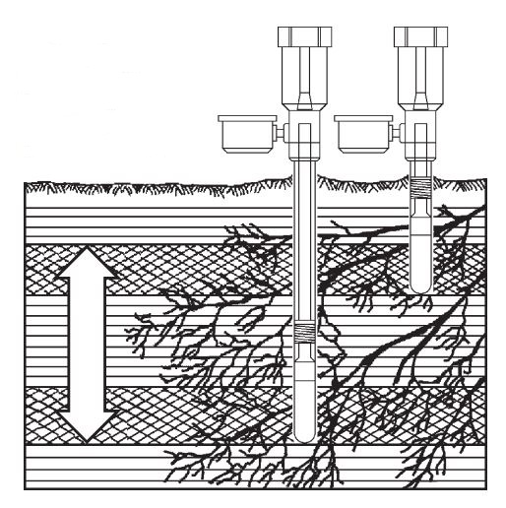
Advantages of using sphygmomanometers
- Direct reading of the tension force that the root system has to do to extract water from the soil.
- Exact measurement values.
- Easy installation and low cost.
- Operation without electricity.
- Does not require prior calibration.
- Possibility of automating readings.
Disadvantages of the use of tensiometers
- discrete measurements. The soil water potential cannot be known continuously.
- The results are not instantaneous, but usually take between 2 and 3 hours before obtaining a value.
- The useful life of the porous capsule is limited.
- Depending on the soil texture the range of readings may be limited.
- Periodic maintenance required.
suction lysimeters
Suction lysimeters are a simple technology tool that allows extract samples of the water contained in the soil for subsequent chemical analysis. Although its main objective was to know the salinity of the water through its use, it is currently a simple method that is used to monitor and determine the nutrients introduced by fertigation, especially nitrogen in soluble form.
How do lysimeters work?
Lysimeters consist, like tensiometers, of a sealed plastic tube together with a porous ceramic tip. Before introducing the lysimeter, vacuum pressure must be created by means of suitable equipment for this purpose.
After irrigation, that is, when the soil maintains its field capacity, the lysimeter is placed inside the active root bulb to begin taking samples. By causing a vacuum pressure or suction pressure inside the tube beforehand, water passes through the porous ceramic tip from the ground into its interior. The time to obtain a sample of a significant volume of water varies between 4 and 8 hours. The obtained sample is extracted from inside the lysimeter with a plastic extraction syringe.
Water can be tested in the field or in a laboratory. It is recommended to wash the syringe with distilled water after each extraction to avoid contamination of the sample in the next use. It is convenient to take samples not only in the root bulb but also just below it to determine if there is nutrient leaching due to over-watering.
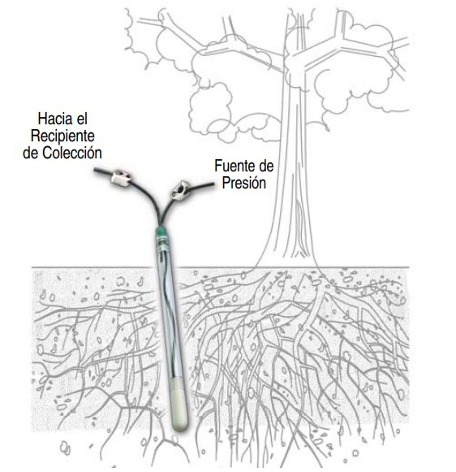
Advantages of using suction lysimeters
- Simple method technology, low cost and non-destructive.
- It reflects the true impact that fertilization has on plant material.
- The information it provides allows the user to reconsider the fertigation schedule.
- Easy to install and use.
Disadvantages of using suction lysimeters
- In situ measurement that requires a long time to extract a sufficient volume of water for subsequent analysis (around 10-15 cm3).
- The longer the instrument is, the less vacuum effect can be achieved, and therefore the longer it takes to get a sufficient sample of water.
- In clayey soils, the cracks that form induce the drying of the soil, which reduces the contact surface of the ceramic capsule with the soil and increases the sample extraction time.
En Mundoriego You can find blood pressure monitors y suction lysimeters of different lengths to carry out measurements at different soil depths. In addition, you will be able to find vacuum equipment to complete your lysimeter, as well as extraction equipment of samples. If you need other types of accessories such as meters of pH, electrical conductivity, TDS or temperature, probes, rain gauges, anemometers, transmitters pH and conductivity probes, etc. Take a look at our website!
Contact us without obligation if you have any questions!


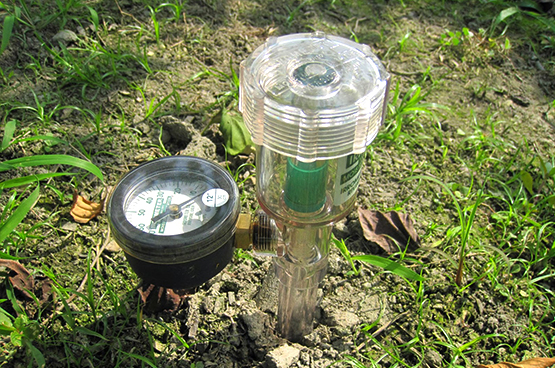
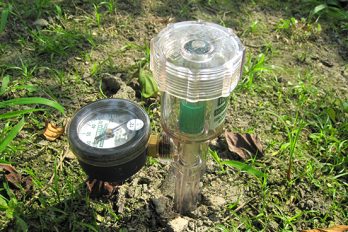






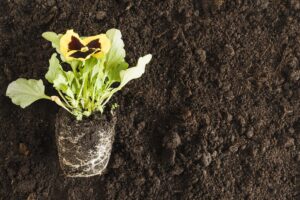

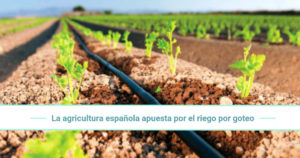

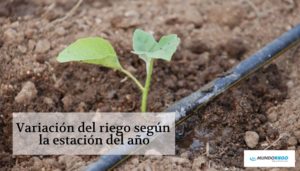




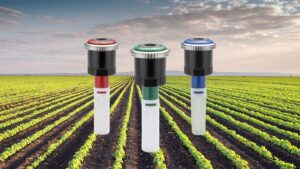









Excellent post...all clear. thank you